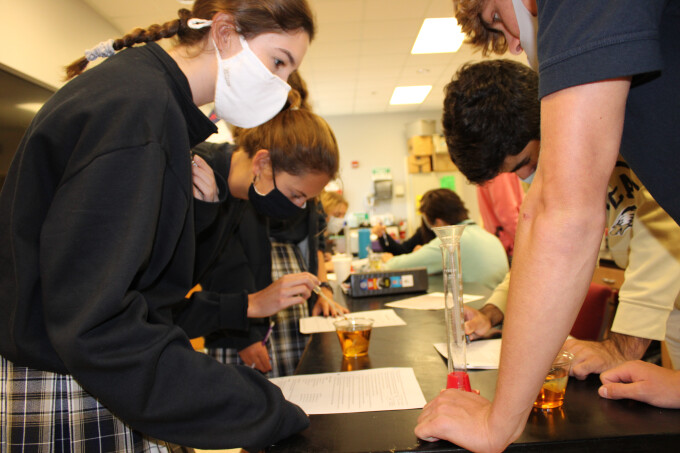Discovering Diffusion In AP Biology

What do diffusion and osmosis inside living cells mean? If you don't know the answer, simply ask the students in Dr. Finneran's AP Biology class, who recently completed a hands-on lab on the topic.
"The AP exam requires that students not only understand biological concepts," explained Dr. Finneran, "but also requires simulation of cellular processes that require students to analyze data and draw conclusions. It provides a real-life application and a more in-depth understanding of a popular AP Biology topic."
It all started when students measured dialysis tubings that were pre-filled with varied concentrations of sucrose solutions. The tubing bags were placed in distilled water overnight and were re-measured to determine how the rate of diffusion varied with different molarities of sucrose.
Students then took porous tubes filled with starch solution and placed it in a small cup filled with distilled water and iodine. As students looked on as spectators, they began to see the once cloudy water inside the dialysis tubing turn an inky black.
This evidence that diffusion, movement of molecules from high concentration to low concentration, was taking place, reinforcing the AP Big Idea of cellular transport.
Junior Bess Weinheimer said, "I learned a lot from [this] hands-on experiment... in this lab, I was able to watch diffusion happen!"
Thanks to the technology of the iPad, those who were zooming in from home were also able to observe, with a little tablet angling help from their fellow classmates. All of the students wrapped up their day with a better understanding of diffusion as they watched the concepts in their textbooks come to life.
